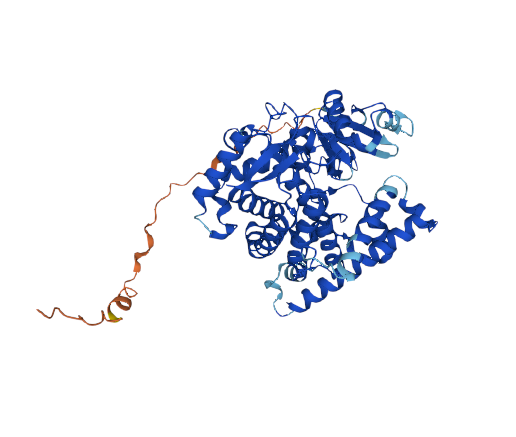Service Line:+1-315-239-3085
Address:FL-4, Building A5, International Enterprise Community, Tianjin, China
Email:info@kmdbioscience.com
25-hydroxy-vitamin (25-OH) is the main form of vitamin D in the body. Vitamin D is a steroid derivative, a fat-soluble vitamin, and a cyclopentane polyhydrophenanthrene. Vitamin D is synthesized primarily by human skin after exposure to ultraviolet light and to a lesser extent from food or supplements. Vitamin D not only affects calcium and phosphorus metabolism, but also has a wide range of physiological roles. It is essential for the maintenance of human health, cell growth and development, and is closely associated with a wide range of diseases. There are two forms of vitamin D in the body, vitamin D3 (cholecalciferol) and vitamin D2 (ergocalciferol). vitamin D is converted to 25-hydroxyvitamin D (25-OH-VD) by hydroxylation in the liver, and then converted to the active 1,25-dihydroxyvitamin D in the kidneys. the level of serum 25-OH-VD reflects the level of vitamin D storage and is related to vitamin D deficiency. storage levels and correlates with vitamin D deficiency.
KMD Bioscience focuses on the research and development of high-quality immunological raw materials for the global in vitro diagnostic reagent industry. The company's main products include monoclonal antibodies, antigens, polyclonal antibodies, etc., and the users cover many in vitro diagnostic giants, and it is one of the important raw material suppliers to the IVD industry, and its products are sold to many countries and regions.
The inventory of reagents associated with 25-hydroxy-vitamin D (25-OH) that KMD Bioscience can offer:
|
CAT# |
Product Name |
Species |
Host |
Application |
Size |
Inquiry |
|
SMAG3197 |
|
|
WB; ELISA; Immunogen; POCT |
50ug, 100ug, 500ug |
Inquiry |
|
|
MA1628 |
Mouse |
|
ELISA, WB |
1mg |
Inquiry |
|
|
PA225 |
Mouse Anti-Human 25-OH VD Monoclonal Antibody (Capture/Detection) |
Human |
Mouse |
LFIA (Lateral-Flow Immunochromatographic Assay), CLIA (Chemiluminescence Immunoassay), ELISA |
1mg |
Inquiry |
|
SMAG3260 |
Human |
|
ELISA, CLIA (Chemiluminescence Immunoassay), Quality Control |
1mg |
Inquiry |
VD Family
Generation I Vitamin D: Vitamin D2 (ergocalciferol) is produced from ergosterol in plants by UV irradiation, and Vitamin D3 (cholecalciferol) is produced from precursors converted from 7-dehydrocholesterol in the skin by UV irradiation. These two are the products of the first step of VD's journey through the body, the generation of the eye. In the next step, they are combined with vitamin D binding protein (DBP) and further metabolized in the liver to produce the second generation. Generation II & C-suite 25-Hydroxyvitamin D (Osteodiol): 25-Hydroxyvitamin D is the main circulating form of vitamin D in the bloodstream, with good stability, and is considered a reliable indicator for evaluating the nutritional status of vitamin D in the human body, which mainly consists of 25(OH)D2 and 25(OH)D3, with 25(OH)D3 being the predominant form present. Tri-substituted & active as 1,25-dihydroxyvitamin D (osteotriol): 25(OH)D is subsequently acted upon by 1α-hydroxylase (CYP27B1) in the proximal tubules of the kidney, and the 1-position is further hydroxylated, yielding 1,25-dihydroxyvitamin D (1,25(OH)2D, osteotriol), which is the most physiologically active constituent of vitamin D. It is in close proximity to the vitamin D receptor ( VDR) affinity. Sandaime no Shadow Split 24,25-dihydroxyvitamin D: 25(OH)D is produced by the action of renal 24-hydroxylase (CYP24A1 ), which produces 24,25-dihydroxyvitamin D (24,25(OH)2D), which is isomeric with Sandaime, but has little affinity for the vitamin D receptor (VDR), which is to say, it is not biologically active. Tetrasome 1,24,25-trihydroxyvitamin D: 1,25(OH)2D is further hydroxylated at position 24 by renal 24-hydroxylase (CYP24A1 ) to yield 1,24,25-trihydroxyvitamin D (1,24,25(OH)3D), which also has little or no affinity for the VDR. Differential C3 isomerization: all metabolites of VD have a tendency to C3 isomerization, which reduces the affinity for VDR and DBP, and also reduces the activity compared to the non-isomerized state; the common ones are 3-differential-25-hydroxyvitamin D3 (3-epi-25(OH)D3) and 3-differential-25-hydroxyvitamin D2 (3-epi-25(OH)D2) .

Figure 1 Schematic diagram of the molecular structure of 25-OH
Biological functions of 25-OH
Regulation of blood calcium level.1,25-Dihydroxyvitamin D3, similar to other steroid hormones, binds to specific nuclear receptors in target cells, enters the nucleus, and regulates the expression of related genes (e.g., calcium-binding protein genes, osteocalcin genes, etc.).1,25-Dihydroxyvitamin D3 also opens up the calcium channels through the signaling system, exerting its rapid regulation of calcium and phosphorus metabolism.1,25-Dihydroxyvitamin D3 promotes calcium and phosphorus metabolism in the small intestine. 1,25-dihydroxyvitamin D3 promotes the absorption of calcium and phosphorus in the small intestine and affects the calcium metabolism of bone tissue, thus maintaining the normal levels of blood calcium and blood phosphorus and promoting the calcification of bone and teeth. Vitamin D is closely related to rickets/osteomalacia, which are metabolic bone diseases caused by impaired mineralization of growth plate cartilage and osteoid, with rickets occurring in growing bones and osteomalacia occurring in mature bones. Vitamin D deficiency, abnormal vitamin D metabolism and abnormal action are important etiologic factors in both diseases. Depending on the etiology, these two diseases are subdivided into vitamin D deficiency, abnormal vitamin D metabolism, abnormal vitamin D action, and hypophosphatemic abnormal vitamin D metabolism. With the exception of abnormal vitamin D metabolism, which presents with abnormally elevated 25-OH VD, all three categories exhibit severe vitamin D deficiency, and therefore serum 25 hydroxyvitamin D can be used to typify rickets/osteomalacia. Osteomalacia is also a common condition of vitamin D deficiency, occurring mostly in the elderly. The main role of vitamin D in the body is the regulation of bones and muscles.
After several years of technological innovation and development, KMD Bioscience now has more than 700 subclasses of antigenic antibody products, with an extensive layout in the fields of cardiac markers, inflammatory markers, infectious diseases, metabolism, oncology, coagulation, thrombosis, etc., and a competitive advantage in the raw material markets of cardiovascular marker detection and influenza virus detection. KMD Bioscience's recombinant antibodies have the advantages of high batch-to-batch consistency, industry-leading validation methods, improved sensitivity and confirmed specificity, easy mass production and long-term supply, and high-throughput in vitro production.